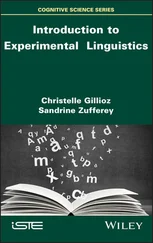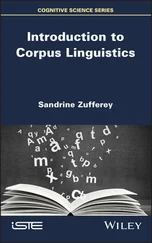An important characteristic of (14), as of all models of psycholinguistic processing, is that its various stages are to be viewed as taking place in real time, and a consequence of this is that psycholinguists can utilise their experimental techniques to try to measure the duration of specific parts of the process and link these measurements to levels of complexity as defined by the grammar itself. In fact, it is fairly easy to see that the idea that the grammar can, without any additional
10
linguistics
considerations, serve as a model of sentence comprehension is implausible.
A sentence such as (15) is known as a garden-path sentence: (15)
The soldiers marched across the parade ground are a disgrace
A common reaction to (15) from native speakers of English is that it is not an acceptable sentence. However, this reaction can often be modified by asking
native speakers to consider the sentences in (16) (recall our observation that not all linguistic data have immediately obvious properties):
(16) a.
The soldiers who were driven across the parade ground are a disgrace
b.
The soldiers driven across the parade ground are a disgrace
c.
The soldiers who were marched across the parade ground are a disgrace
Sentence (16a) should be regarded as entirely straightforward, and we can view
(16b) as ‘derived’ from it by deleting the sequence of words who were. Now, if we delete who were from sentence (16c), which should also be recognised as an acceptable English sentence, we ‘derive’ (15), and at this point many readers are likely to change their reaction to (15): it is an acceptable English sentence, so long as it is interpreted with the phrase the soldiers as the logical object of marched (see p. 5 above). When we read (15) for the first time, we immediately interpret the soldiers as the logical subject of marched – the soldiers are marching rather than being marched; as a consequence, the sequence the soldiers marched across the parade ground is interpreted as a complete sentence and the sentence processor doesn’t know what to do with are a disgrace. The sentence processor has been
‘garden-pathed’, i.e. sent down the wrong analysis route (exercise 6).
What is important about garden-path sentences is that they show that sentence comprehension must involve something in addition to the grammar. As far as the grammar is concerned, (15) is an acceptable structure with only one interpretation.
However, it appears that this structure and interpretation are not readily available in sentence processing, suggesting that the parser must rely (to its detriment in this case) on something beyond the principles which determine acceptable combinations of words and phrases.
There are other aspects of (14) which are controversial and have given rise to large numbers of experimental psycholinguistic studies. For instance, there is no place in (14) for non-linguistic general knowledge about the world; according to (14), interpretations are computed entirely on the basis of linguistic properties of expressions without taking any account of their plausibility, and an alternative would allow encyclopaedic general knowledge to ‘penetrate’ sentence perception and guide it to more likely interpretations. A further assumption in (14) is that the different sub-components are serially ordered (in that the first stage is phonological processing which does its job before handing on to lexical processing, etc.) An alternative would allow syntactic and semantic factors to influence phonological and lexical processing, for semantic factors to influence syntactic processing, etc. These issues, along with several others, will be discussed in
sections 14 and 26.
Introduction
11
Neurolinguistics
The neurolinguist addresses the fourth of our research questions: how is
linguistic knowledge represented in the brain? It is easy to sympathise with the fundamental nature of this question, since we firmly believe that cognitive capacities are the product of structures in the brain. However, the direct study of the human brain is fraught with difficulties. Most obvious among these is the fact that ethical considerations forbid intrusive experimentation on human brains. Such considerations are not extended to non-humans, with the consequence that the neuroanatomy and neurophysiology of non-human, primate visual systems, similar in their capacities to that of humans, are already understood in some detail. For language, however, we have to rely on less controlled methods of investigation, for example, by studying brain-damaged patients who suffer from language disorders.
In these circumstances, the extent and precise nature of the damage is not known, a factor which inevitably contributes to the tentativeness of conclusions.
The brain is an extremely complex organ, consisting of several ‘layers’. The layer which has evolved most recently and is most characteristic of higher primates such as ourselves is the cerebral cortex, the folded surface of the cerebral hemispheres, which contains what is often referred to as grey matter. This is where the higher intellectual functions, including language, are located. There are various ways in which the cerebral cortex can be damaged. For instance, it may suffer injury from a blow to the head or through some other type of wound. Alternatively, it may suffer internal damage due to disease or a blockage in a blood vessel (an embolism or thrombosis), which results in disruption of the blood supply and the death of cortical cells. Areas of damage are generally referred to as lesions.
The study of patients with various types of brain damage has revealed that different parts of the brain are associated with (i.e. control) different functions. In other words, it is possible to localise different functions in the brain as indicated in figure 1.
A language disorder resulting from brain damage is called aphasia, and a
notable point is that this sort of brain damage almost always occurs in the left side of the brain (the left hemisphere). Damage to similar areas in the right hemisphere usually gives rise to entirely different deficits that have little to do with language. Aphasics who lose their language completely are said to suffer from global aphasia, and while in many cases the brain damage is extensive
enough to affect other intellectual functions, sometimes patients retain a good many of the cognitive capacities they had before the injury. In particular, although these patients are unable to produce or understand language, they can often solve intellectual puzzles which don’t rely on language.
As we have seen, Chomsky claims that linguistic competence is the product of a species-specific innate language faculty, and it is further maintained that this faculty is independent of other cognitive capacities. Of course, the selective impairment of language with other faculties remaining intact, which we have
just described, is exactly what we might expect on the supposition that the
language faculty is an autonomous and innate cognitive capacity.
12
linguistics
Figure 1 The human cerebral cortex, with the functions of some areas indicated Figure 2 The human cerebral cortex, with Broca’s Area (BA) and Wernicke’s Area (WA) indicated
As well as language being adversely affected while other aspects of cognitive functioning remain intact, it is possible for specific types of language function to be impaired, depending on where in the cortex the lesion occurs. In 1861 a French neurologist, Paul Broca, described a patient who had suffered a stroke and who could say only one word. After the patient’s death, Broca studied his brain and discovered a large lesion in the frontal lobe of the left hemisphere, the area BA in figure 2.
Читать дальше
![Andrew Radford Linguistics An Introduction [Second Edition] обложка книги](/books/397851/andrew-radford-linguistics-an-introduction-second-cover.webp)











